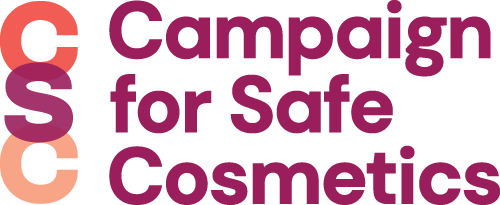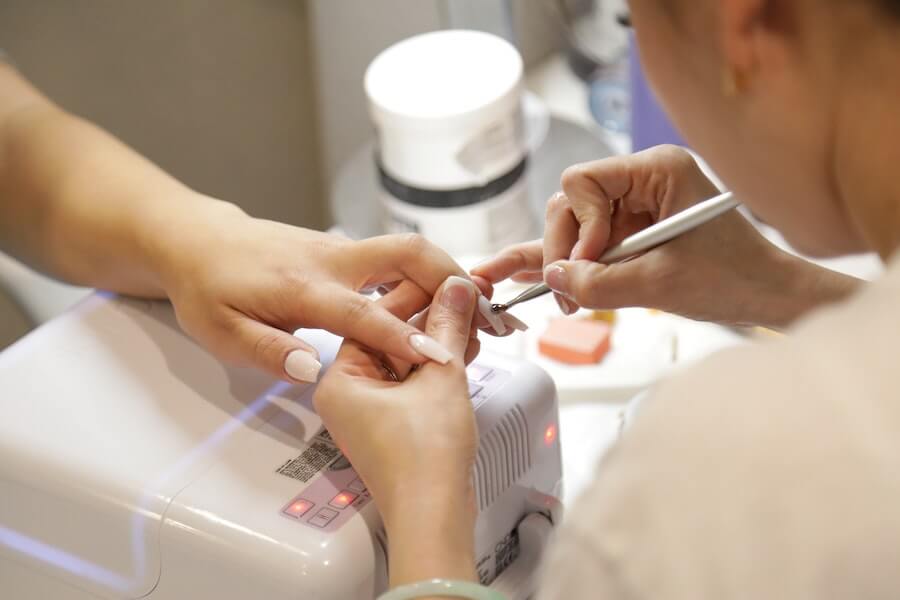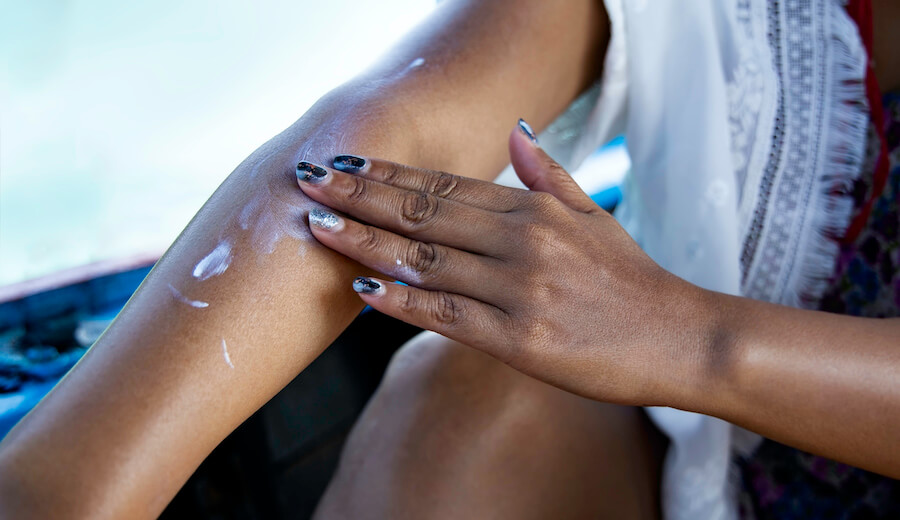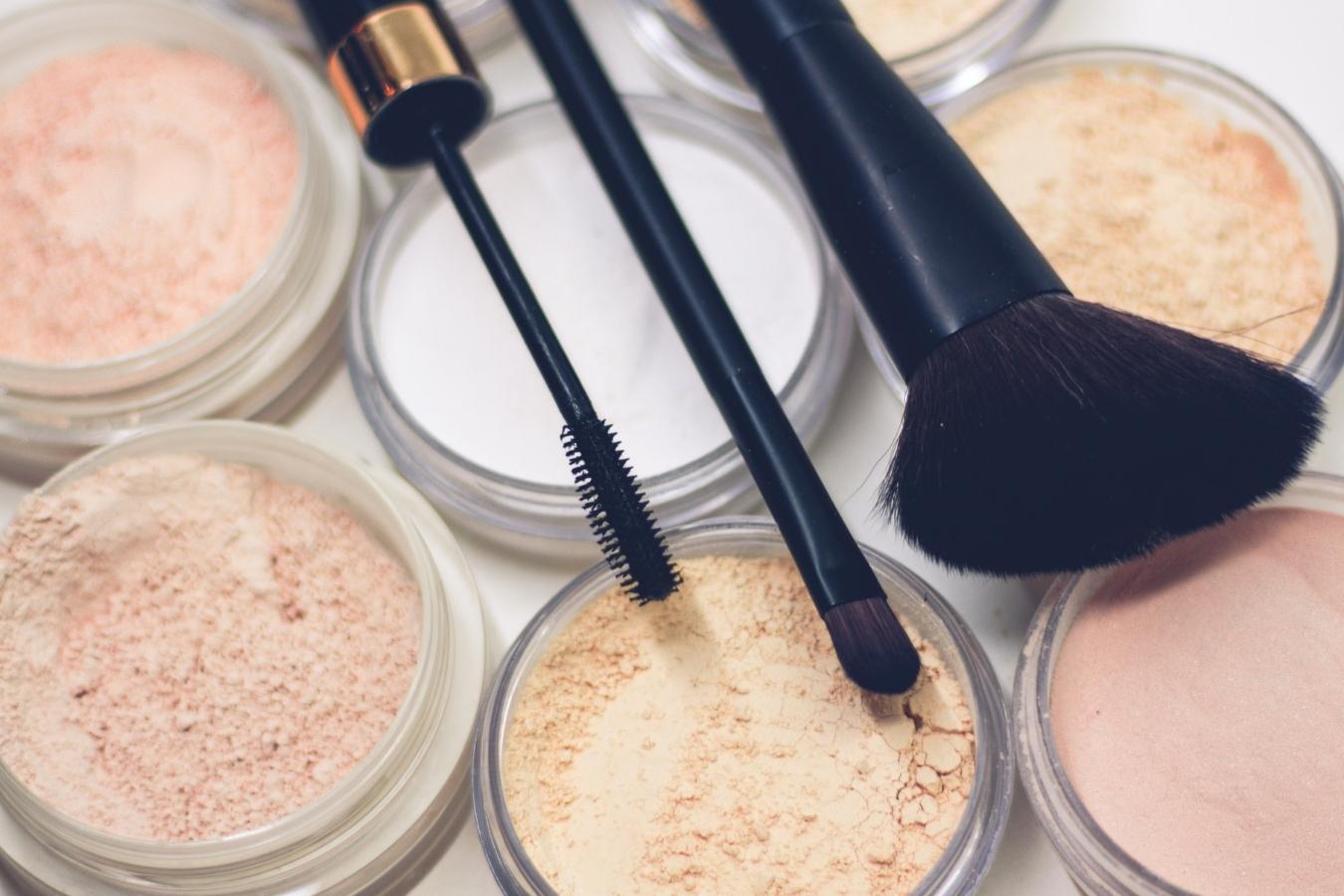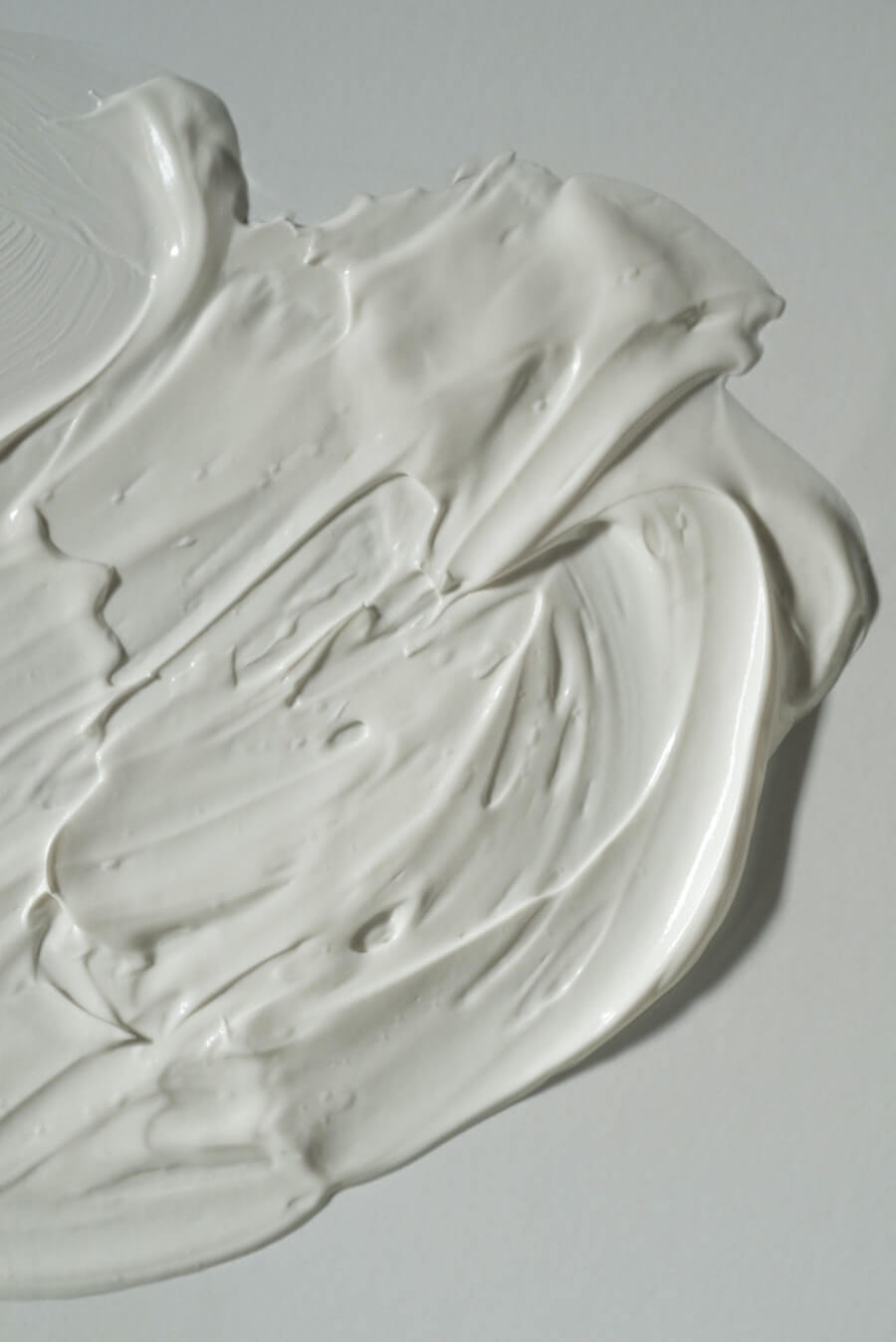[1] NICNAS. Inventory multi-tiered assessment and prioritization for 2-propenoic acid, 2-methyl-,methyl ester. Australian Department of Health and Ageing. 2013. Available online: https://chemycal.com/dap/files/Guidance/201408-NICNAS.pdf. Accessed April 18, 2022.
[2] Boehncke W, Schmitt M, Zollner T, Hensel O. Nail polish allergy. An important differential diagnosis in contact dermatitis. Dtsch Med Wochenschr, vol. 122, no. 27, pp 849-852, 1997. Available at: https://pubmed.ncbi.nlm.nih.gov/9280695/. Accessed April 18, 2022.
[3] Kim Y, Chung J. Bilateral eyelid contact dermatitis and toxic conjunctivitis due to acrylate-containing glue. Ann Dermatol., vol. 26, no. 4, pp 543-544, 2014.
[4] Erdmann S, Sachs B, Merk H. Adverse reactions to sculptured nails. Allergy, vol. 56, no. 6, pp 581-582, 2001.
[5] Dillingham E, Lawrence W, Autian J. Acrylate and methacrylate esters: relationship of hemolytic activity and in vivo toxicity. Journal of Biomedical Materials Research, vol. 17, pp 945-957, 1983.
[6] Williams G, Iatropoulos M. Evaluation of potential human carcinogenicity of the synthetic monomer ethyl acrylate. Regulatory Toxicology and Pharmacology, vol. 53, no. 1, pp 6-15, 2009.
[7] NIH National Library of Medicine. CAS registry number: 97-63-2 toxicity effects. Available online: https://pubchem.ncbi.nlm.nih.gov/compound/7343. Accessed April 18, 2022.
[8] Center for Disease Control and Prevention. (2014). Methyl Methacrylate. Available online: http://www.cdc.gov/niosh/npg/npgd0426.html. Accessed April 18, 2022.
[9] Spencer A, Estill C, McCammon J, Mickelsen R, Johnston O. Control of ethyl methacrylate exposures during the application of artificial fingernails. Am. Ind. Hyg. Assoc. J. vol. 58, pp 214–218, 1997.
[10] Spencer A, Estill C, McCammon J, Mickelsen R, Johnston O. Control of ethyl methacrylate exposures during the application of artificial fingernails. Am. Ind. Hyg. Assoc. J. vol. 58, pp 214–218, 1997.
[11] U.S. Food and Drug Administration. (2014). Cosmetics Safety Q&A: prohibited ingredients. FDA database. Washington, DC: FDA. Available online: http://www.fda.gov/Cosmetics/ResourcesForYou/Consumers/ucm167234.htm. Accessed April 18, 2022.
[12] American Journal of Toxicology. Final report of the safety assessment of methacrylate ester monomers used in nail enhancement products. International Journal of Toxicology, vol. 24, pp 53-100, 2005.
[13] Cosmetic Ingredient Review Expert Panel. Amended final report on the safety assessment of ethyl methacrylate. Int J Toxicol, vol. 21, supplement 1, pp 63-79, 2002. Available online: https://pubmed.ncbi.nlm.nih.gov/16596769/. Accessed April 18, 2022.
[14] American Beauty Association/Nail Manufacturers Council. Butyl, Isobutyl, and Lauryl Methacrylate. Washington DC, pp 34, 2001.
[15] International Agency for Research on Cancer. Ethyl Acrylate. IARC Monographs, supplement 7, pp 1447-1457, 1999. Available online: http://monographs.iarc.fr/ENG/Monographs/vol71/mono71-99.pdf. Accessed April 18, 2022.
[16] U.S. Environmental Protection Agency. Ethyl Acrylate. Technology Transfer Network, Air Toxics Web Site, 2013. Available online: https://www.epa.gov/haps/health-effects-notebook-hazardous-air-pollutants. Accessed April 18, 2022.
[17] Tomenson J, Carpenter A, Pemberton M. Critical review of the epidemiology literature on the potential cancer risks of methyl methacrylate. Int Arch Occup Environ Health, vol. 78, no. 8, pp 603-612, 2005. Available online: https://pubmed.ncbi.nlm.nih.gov/16034639/. Accessed April 18, 2022.
[18] Diaz J. Proportionate cancer mortality in methyl methacrylate-exposed orthopedic surgeons compared to general surgeons. J Med Toxicol., vol. 7, no. 2 , pp 125-132, 2011. Available online: http://www.ncbi.nlm.nih.gov/pmc/articles/PMC3724436/. Accessed April 18, 2022.
[19] Singh A, Lawrence W, Autian J. Embryonic-fetal toxicity and teratogenic effects of a group of methacrylates esters in rats. J Dent Res., vol. 51, pp 1632-1638, 1972. Available online: https://pubmed.ncbi.nlm.nih.gov/4508973/. Accessed April 18, 2022.
[20] Fakhouri J, Aftimos G, Hilal G, Sarkis R. The effects of methyl methacrylate monomer on testosterone level in male rats. An experimental study. J Med. Liban, vol. 56, no. 1, 11-15, 2008. Available online: https://pubmed.ncbi.nlm.nih.gov/19534085/. Accessed April 18, 2022.
[21] Fakhouri J, Sarkis R, Chababi-Atallah M, Aftimos G. Toxic effects of methyl methacrylate monomer on male genital tissues. In vitro study in rats. J Med Liban., vol. 56, no. 1, 22-26, 2008. Available online: https://pubmed.ncbi.nlm.nih.gov/19534087/. Accessed April 18, 2022.
[22] Aydin O, Attila G, Dogan A, Aydin M, Canacankatan N, Kanik A. The effects of methyl methacrylate on nasal cavity, lung, and antioxidant system (an experimental inhalation study). Toxicological Pathology, vol. 30, no. 3, pp 350-356, 2002. Available online: https://pubmed.ncbi.nlm.nih.gov/12051552/.
[23] European Chemicals Bureau. Methyl Methacrylate: European Union Risk Assessment Report, vol. 22, 1-180, 2002. Available online: http://echa.europa.eu/documents/10162/7c9a0eb6-9b7f-4fd6-846b-d480e8e0003d.
[24] Aydin O, Attila G, Dogan A, Aydin M, Canacankatan N, Kanik A. The effects of methyl methacrylate on nasal cavity, lung, and antioxidant system (an experimental inhalation study). Toxicological Pathology, vol. 30, no. 3, pp 350-356, 2002. Available online: https://pubmed.ncbi.nlm.nih.gov/12051552/. Accessed April 18, 2022.
[25] NIH National Library of Medicine. CAS registry number: 97-63-2 toxicity effects. Ethyl Methacrylate. Available online: https://pubchem.ncbi.nlm.nih.gov/compound/Ethyl-methacrylate. Accessed April 18, 2022.
[26] Moore M, Amtower A, Doerr C, Brock K, Dearfield K. Genotoxicity of acrylic acid, methyl acrylate, ethyl acrylate, methyl methacrylate, and ethyl methacrylate in L5178Y mouse lymphoma cells. Envrion. Mol Mutagen., 11, 49-63, 1988.
[27] European Chemicals Bureau. Methyl Methacrylate: European Union Risk Assessment Report, vol. 22, 1-180, 2002. Available online: http://echa.europa.eu/documents/10162/7c9a0eb6-9b7f-4fd6-846b-d480e8e0003d. Accessed April 18, 2022.
[28] LoPachin R, Gavin T. Molecular mechanisms of acrylamide neurotoxicity: lessons learned from organic chemistry. Environmental Health Perspectives, vol. 120, no. 12, pp 1650-1657, 2012. Available online: https://www.ncbi.nlm.nih.gov/pmc/articles/PMC3548275/. Accessed April 18, 2022.
[29] Moore M, Amtower A, Doerr C, Brock K, Dearfield K. Genotoxicity of acrylic acid, methyl acrylate, ethyl acrylate, methyl methacrylate, and ethyl methacrylate in L5178Y mouse lymphoma cells. Envrion. Mol Mutagen., 11, 49-63, 1988. Available online: https://pubmed.ncbi.nlm.nih.gov/3338441/. Accessed April 18, 2022.
[30] Abou-Donia M, et al. Neurotoxicity of ethyl methacrylate in rats. J Toxicol Environ Health A., vol. 59, no. 2, pp 97-118, 2000. Available online: https://pubmed.ncbi.nlm.nih.gov/10653438/. Accessed April 18, 2022.
[31] Sadoh D, Sharief M, Howard R. Case study: occupational exposure to methyl methacrylate monomer induces generalized neuropathy in a dental technician. British Dental Journal, vol. 186, pp 380-381, 1999. Available online: https://www.semanticscholar.org/paper/Case-Study%3A-Occupational-exposure-to-methyl-monomer-Sadoh-Sharief/d7543bbbf7b529565ad248de05e8a72a93ed3ce8. Accessed April 18, 2022.
[32] Slodownik D, Williams D, Tate B. Prolonged paresthesia due to sculptured acrylic nails. Contact Dermatitis, vol. 56, pp 298-299, 2007.
[33] Cosmetic Ingredient Review Expert Panel. Amended final report on the safety assessment of ethyl methacrylate. Int J Toxicol, vol. 21, supplement 1, pp 63-79, 2002. Available online: https://pubmed.ncbi.nlm.nih.gov/16596769/. Accessed April 18, 2022.
[34] Wittczak T, Palczynski C, Szulc B, Giorski P. Bronchial asthma with inflammation of the nose mucous membrane induced by occupational exposure to methyl methacrylate in a dental technician. Medycyna Pracy, vol. 47, pp 259-266, 1996.
[35] Lozewicz S, et al. Occupational asthma due to methyl methacrylate and cyanoacrylates. Thorax, vol. 40, pp 836-839, 1985. Available online: https://www.ncbi.nlm.nih.gov/pmc/articles/PMC1020561/. Accessed April 18, 2022.
[36] Spencer A, Estill C, McCammon J, Mickelsen L, Johnston O. Control of ethyl methacrylate exposures during the application of artificial fingernails. American Industrial Hygiene Association Journal, vol. 58, no. 3, pp 214-218, 1997.
[37] Sauni R, Kauppi P, Alanko K, Henriks-Eckerman M, Tuppurainen M, Hannu T. Occupational asthma caused by sculptured nails containing methacrylates. American Journal of Industrial Medicine, vol. 51, pp 968-974, 2008. Available online: https://onlinelibrary.wiley.com/doi/abs/10.1002/ajim.20633. Accessed April 18, 2022.
[38] Henriks-Eckerman M, Korva M. Exposure to airborne methacrylates in nail salons. Journal of Occupational and Environmental Hygiene, vol. 9, pp D148-D152, 2012.
[39] NIH National Library of Medicine. CAS registry number: 97-63-2 toxicity effects. Available online: https://pubchem.ncbi.nlm.nih.gov/compound/Ethyl-methacrylate. Accessed April 18, 2022.
[40] Centers for Disease Control and Prevention. (2010). Methyl Methacrylate. Available online: https://www.cdc.gov/niosh/npg/npgd0426.html. Accessed April 18, 2022.
[41] Dearman R, Betts C, Farr C, McLaughlin J, Berdasco N, Wiench K, Kimber I. Comparative analysis of skin sensitization potency of acrylates (methyl acrylate, ethyl acrylate, butyl acrylate, and ethylhexyl acrylate) using the local lymph node assay. Contact Dermatitis, vol. 57, pp 242-247, 2007.
[42] Freeman S, Lee M-S, Gudmundsen K. Adverse contact reactions to sculptured acrylic nails: 4 case reports and a literature review. Contact Dermatitis, vol. 33, pp 381-385, 1995.
[43] Ramos L, Cabral R, Goncalo M. Allergic contact dermatitis caused by acrylates and methacrylates – a 7-year study. Contact Dermatitis, vol. 71, pp 102-107, 2014.
[44] Ramos L, Cabral R, Goncalo M. Allergic contact dermatitis caused by acrylates and methacrylates – a 7-year study. Contact Dermatitis, vol. 71, pp 102-107, 2014.
[45] Cosmetic Ingredient Review Expert Panel. Amended final report on the safety assessment of ethyl methacrylate. Int J Toxicol, vol. 21, supplement 1, pp 63-79, 2002. Available online: https://pubmed.ncbi.nlm.nih.gov/16596769/. Accessed April 18, 2022.
[46] NIH National Library of Medicine. CAS registry number: 97-63-2 toxicity effects. Ethyl Methacrylate. Available online: https://pubchem.ncbi.nlm.nih.gov/compound/Ethyl-methacrylate. Accessed April 18, 2022.
[47] Centers for Disease Control and Prevention. (2010). Methyl Methacrylate. Available online: https://www.cdc.gov/niosh/npg/npgd0426.html. Accessed April 18, 2022.
[48] Ramos L, Cabral R, Goncalo M. Allergic contact dermatitis caused by acrylates and methacrylates – a 7-year study. Contact Dermatitis, vol. 71, pp 102-107, 2014.
[49] Uter W, Geier J. Contact allergy to acrylates and methacrylates in consumers and nail artists – data of the Information Network of Departments of Dermatology, 2004-2013. Contact Dermatitis, vol. 72, pp 224-228, 2015.
[50] Lazarov A. Sensitization to acrylates is a common adverse reaction to artificial fingernails. Journal of the European Academy of Dermatology and Venereology, vol. 21, pp 169-174, 2007.
[51] Borak J, Fields C, Andrews L, Pemberton M. Methyl methacrylate and respiratory sensitization: a critical review. Crit Rev Toxicol, vol. 41, no. 3, pp 230-268, 2011.
[52] Methacrylate Producers Association, Inc. The methacrylate producers association’s position on use of methacrylic and unreacted methacrylate monomers liquid form in artificial nail products, 2012. Available online: http://static1.1.sqspcdn.com/static/f/1405676/22020353/1361810987690/artificial_nails2.pdf?token=shomjmAvP3NDphvtSYBL3nz4vl8%3D. Accessed April 18, 2022.
[53] U.S. Food and Drug Administration. (1994). Frequency of use of cosmetic ingredients. FDA database. Washington, DC: FDA.
[54] U.S. Food and Drug Administration. (2014). Nail Care Products. FDA Database. Washington, DC: FDA. Available online: http://www.fda.gov/Cosmetics/ProductsIngredients/Products/ucm127068.htm. Accessed April 18, 2022.
[55] Alaves V, Sleeth D, Thiese M, Larson R. Characterization of indoor air contaminants in a randomly selected set of commercial nail salons in Salt Lake County, Utah, USA. International Journal of Environmental Health research, vol. 23, no. 5, pp 419-433, 2013.
[56] Methacrylate Producers Association, Inc. The methacrylate producers association’s position on use of methacrylic and unreacted methacrylate monomers liquid form in artificial nail products, 2012. Available online: http://static1.1.sqspcdn.com/static/f/1405676/22020353/1361810987690/artificial_nails2.pdf?token=shomjmAvP3NDphvtSYBL3nz4vl8%3D. Accessed April 18, 2022.
[57] Food and Drug Administration. “Nail Care Products.” Available online: https://www.fda.gov/cosmetics/cosmetic-products/nail-care-products. Accessed April 18, 2022.
[58] Occupational Safety and Health Administration. Stay healthy and safe while giving manicures and pedicures: a guide for nail salon workers. U.S. Department of Labor, 2012. Available online: https://www.osha.gov/Publications/3542nail-salon-workers-guide.pdf. Accessed April 18, 2022.
